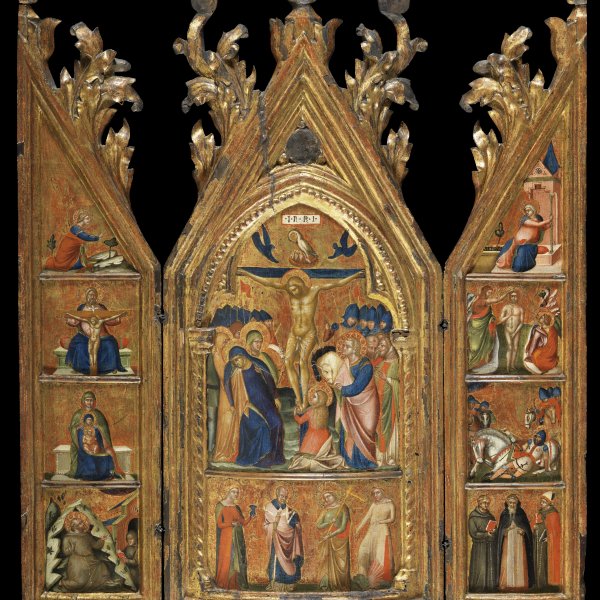Lorenzo Veneziano
Active between 1356 and 1372
Little information is available on the life of Lorenzo Veneziano, whose career has been reconstructed through his various signed and dated works. The artist was active in Venice, Padua, Vicenza, Bologna, Imola and Udine. His fame extended beyond the Veneto and Lorenzo Veneziano was the most celebrated Venetian painter of the second half of the 15th century. It is generally accepted that he trained with Paolo Veneziano, although there is no documentation to support this assumption. His work also reveals the influence of Guariento, Tommaso da Modena and the young Altichiero.
The first reference to a work by the artist relates to an altarpiece of 1356 (now lost). Subsequent works include The Annunciation with Saints and Prophets known as the Lion Polyptych (Gallerie dell’Accademia, Venice), of 1357 to 1359; the Mystic Marriage of Saint Catherine (also Accademia, Venice) of 1359; The Virgin (Museo Civico, Padua), of 1361; the polyptych in Vicenza cathedral of 1370; the Annunciation Polyptych (Accademia, Venice) of 1371; and The Virgin and Child enthroned (Musée du Louvre, Paris).
Veneziano’s style features elements derived from Gothic art. The proportions of his figures reflect the influence of Paolo Veneziano but the faces and draperies are more individualised and expressive. Veneziano also included motifs derived from first-hand observation and real life, which was innovative within the context of Venetian art, and in general his paintings reveal a particular interest in emphasising the relationships between the sweet, gentle figures. His use of light and chromatic contrasts indicate contacts with Paduan painting. From the 1360s Veneziano’s style evolved and his figures become less elongated and more compact, modelled with great delicacy.
The first reference to a work by the artist relates to an altarpiece of 1356 (now lost). Subsequent works include The Annunciation with Saints and Prophets known as the Lion Polyptych (Gallerie dell’Accademia, Venice), of 1357 to 1359; the Mystic Marriage of Saint Catherine (also Accademia, Venice) of 1359; The Virgin (Museo Civico, Padua), of 1361; the polyptych in Vicenza cathedral of 1370; the Annunciation Polyptych (Accademia, Venice) of 1371; and The Virgin and Child enthroned (Musée du Louvre, Paris).
Veneziano’s style features elements derived from Gothic art. The proportions of his figures reflect the influence of Paolo Veneziano but the faces and draperies are more individualised and expressive. Veneziano also included motifs derived from first-hand observation and real life, which was innovative within the context of Venetian art, and in general his paintings reveal a particular interest in emphasising the relationships between the sweet, gentle figures. His use of light and chromatic contrasts indicate contacts with Paduan painting. From the 1360s Veneziano’s style evolved and his figures become less elongated and more compact, modelled with great delicacy.





